Religion
What makes Bohra Muslims in India different from other Muslim communities?
Unravelling the rich culture, faith, and global influence of the Dawoodi Bohra community in this immersive profile

The Bohra Muslims, particularly the Dawoodi Bohras, form a distinctive Shia Ismaili community with deep roots in Gujarat, India. Tracing their spiritual lineage to Egypt and Yemen, this tight-knit group spans a global diaspora of between one to two million individuals. Their name stems from the Gujarati word vohrvu (“to trade”), reflecting their heritage as prosperous merchants, professionals, and scholars.
At the heart of Bohra identity lies the Da’i al‑Mutlaq, the community’s spiritual leader. Since 2014, Mufaddal Saifuddin has served as the 53rd Da’i, guiding daily life, education, finance, and religious observances. According to sources, the Dawoodi Bohras are well‑educated and commit strongly to philanthropy—running community kitchens named Faiz al‑Mawaid al‑Burhaniyah that operate worldwide.

But beyond the statistics lies a vibrant cultural tapestry. Practicing a faith that stems from Fatimid Ismaili traditions, the community adheres to the Seven Pillars of Islam—including daily prayers, fasting, pilgrimage, and devotion to the Prophet’s lineage. Their beliefs are embodied in unique rituals—the mithaq oath of allegiance, communal meals from a large platter (thaal), and the wearing of Libas al‑Anwar: white robes and caps for men, colorful two‑piece rida dress for women.
Inside their global hubs—from Mumbai to Nairobi and beyond—faith meets modernity. Through their schools (Madrasah Saifiyah and international branches), entrepreneurship initiatives, and a zero‑waste ethos in religious gatherings, the community harmonizes tradition with innovation.According to accounts, their Dana Committee volunteers use AI and RSVP apps to track food waste and feed the needy—at times gathering hundreds of thousands for zero‑waste congregations.
Yet the Bohras are not without controversy. Female circumcision (khatna/khaffz) remains practiced amid criticism and debate over consent and health consequences, with some experts describing it as FGM.Despite this, the community maintains a reputation for unity, business acumen, and a strong sense of identity.
Religion
No other public message from the Dalai Lama: His Holiness breaks silence on successor, stirs debate with bold spiritual vow
On his 90th birthday, the Dalai Lama affirms that the sacred institution will continue, but warns—“No one else has any such authority”… sparking global intrigue over his successor and China’s role.

In a monumental announcement on the occasion of his 90th birthday according to the Tibetan lunar calendar, His Holiness the 14th Dalai Lama has ended months of speculation and affirmed that the sacred institution of the Dalai Lama will continue after his passing. Delivered from his spiritual seat in Dharamshala, India, the revered Tibetan leader’s video message resonated far beyond the Himalayan town, with followers and observers across the world hanging onto every word.
In accordance with all these requests, I am affirming that the institution of the Dalai Lama will continue, His Holiness declared.
He added that the process of selecting his reincarnation—widely anticipated due to both religious tradition and geopolitical tensions—will be solely handled by the Gaden Phodrang Foundation, the spiritual body he established in 2015.
No one else has any such authority to interfere in this matter, he warned, sending a clear message to Beijing.
“No other public message from His Holiness”
At a press conference following the video, Samdhong Rinpoche, a close aide to the Dalai Lama, was asked by the BBC whether the world should expect more public messages on this deeply sensitive subject. His response was decisive:
Whenever the time comes, it will be internal and there will be no other public message from His Holiness on this matter.
This revelation, coupled with the Dalai Lama’s earlier comments in his book Voice for the Voiceless, has sparked worldwide interest. In the book, he hinted that his successor may be born outside China, a statement that appears to have now taken clearer shape.
“An earnest request” from Tibetans worldwide
Penpa Tsering, the Sikyong (President) of the Tibetan government-in-exile, shared that the global Tibetan community had made “an earnest request with single-minded devotion” for the continuation of the Dalai Lama’s spiritual leadership.
His Holiness has shown infinite compassion and finally agreed to accept our appeal on this special occasion, Tsering added, referencing the unanimous resolution passed by the 15th Tibetan Religious Conference.
Tradition vs. Politics: A Spiritual Line in the Sand
According to Tibetan Buddhist tradition, a Dalai Lama is reincarnated, and spiritual authorities recognize the new child by identifying signs that indicate he harbors the soul of his predecessor. The current Tenzin Gyatso, born Lhamo Dhondup in 1935, was recognized at the age of two.
Yet, China’s position on the matter remains tense. Ahead of the announcement, Chinese state media emphasized that reincarnations should be governed by historical procedures such as the “golden urn” lot-drawing system introduced in 1792, and accused the Dalai Lama of “politicizing” the process.
The Global Times claimed, His intention remains the same — to manipulate the reincarnation process for his own purposes.
Tibetans and their allies argue the opposite—that China seeks to politically control and install a compliant successor.
A Legacy of Exile and Nonviolence
The Dalai Lama fled Tibet in 1959, after a failed uprising against Chinese rule, disguising himself as a soldier and trekking across the Himalayas. He has lived in India ever since, where he was granted asylum and has continued his spiritual mission of nonviolence and compassion. In 1989, he received the Nobel Peace Prize for his peaceful efforts to preserve Tibetan identity.
Still describing himself humbly as “a simple Buddhist monk,” the Dalai Lama remains the most significant spiritual and political symbol of Tibetan Buddhism.
Entertainment
Asia Celebrates Eid al-Adha 2025: A Festival of Sacrifice and Unity
From Indonesia to India, Muslims commemorate Prophet Ibrahim’s devotion with prayers, feasts, and acts of charity
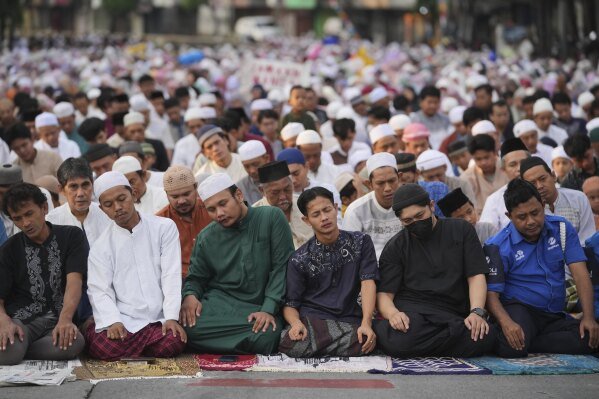
Today, Saturday, June 7, 2025, Muslims across Asia are celebrating Eid al-Adha, also known as Bakrid, one of the most significant festivals in the Islamic calendar. The date of the celebration varies globally due to differences in moon sightings; while countries like Saudi Arabia and Indonesia observed the festival on June 6, nations including India, Pakistan, and Bangladesh are marking it today.
Eid al-Adha commemorates the unwavering faith of Prophet Ibrahim (Abraham), who was willing to sacrifice his son in obedience to God’s command. In remembrance of this act of devotion, Muslims perform the ritual of Qurbani, the sacrifice of an animal, and distribute the meat among family, friends, and those in need.
In Indonesia, home to the world’s largest Muslim population, the celebrations began with congregational prayers at mosques and open fields. Communities gathered to perform the sacrificial rites, emphasizing the spirit of sharing and compassion.
In India, vibrant markets in cities like Hyderabad have been bustling with activity as families prepare for the festivities. The day commenced with special prayers at mosques and Eidgahs, followed by the Qurbani ritual. Traditional dishes such as biryani, kebabs, and sheer khurma are being prepared, and the meat from the sacrifices is shared with neighbors and the underprivileged, embodying the festival’s essence of generosity.
Prime Minister Narendra Modi extended his greetings to the nation, highlighting Eid al-Adha as a festival that inspires sacrifice and unity. He emphasized the importance of coming together in harmony and reflecting on the values that the festival promotes.
As the celebrations continue, the festival serves as a reminder of the virtues of faith, obedience, and charity, bringing communities together in a shared spirit of devotion and goodwill.
Entertainment
Saudi Arabia Celebrates Eid al-Adha 2025: A Day of Devotion and Unity
Kingdom observes the Festival of Sacrifice on Friday, June 6, with prayers, Qurbani, and acts of charity
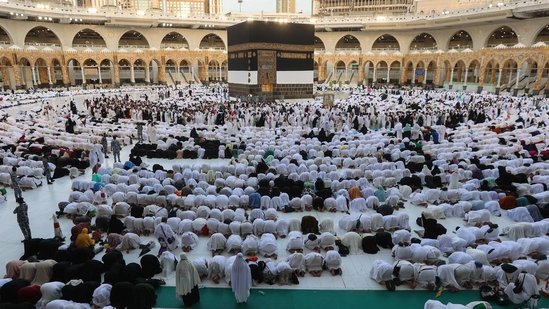
On Friday, June 6, 2025, Saudi Arabia observed Eid al-Adha, one of the most significant festivals in Islam. The date was determined following the sighting of the Dhul Hijjah crescent moon on May 27, marking the beginning of the Islamic month of Dhul Hijjah on May 28. Consequently, Arafat Day was commemorated on Thursday, June 5, followed by Eid al-Adha on June 6.
Eid al-Adha, also known as the “Festival of Sacrifice,” honors Prophet Ibrahim’s unwavering faith and obedience to Allah. According to Islamic tradition, Ibrahim was willing to sacrifice his son Ismail in submission to God’s command. However, Allah intervened and provided a ram to sacrifice instead, symbolizing divine mercy and the importance of devotion.
The day commenced with congregational prayers held at mosques and open grounds across the Kingdom, including the Masjid al-Haram in Mecca and the Prophet’s Mosque in Medina. Worshippers, dressed in traditional attire, gathered to perform the special Eid prayers, seeking blessings and expressing gratitude.
Following the prayers, Muslims performed the ritual of Qurbani, the sacrifice of livestock such as sheep, goats, cows, or camels. The meat from the sacrifice was distributed in three parts: one-third for the family, one-third for relatives and friends, and one-third for the less fortunate, embodying the spirit of sharing and compassion.
Eid al-Adha also coincides with the culmination of the Hajj pilgrimage, one of the Five Pillars of Islam. Pilgrims in Mecca engaged in the stoning of the devil ritual in Mina, symbolizing the rejection of evil and reaffirming their commitment to faith.
The Saudi government declared public holidays from June 6 to June 8, allowing citizens and residents to partake in the festivities and spend time with family and friends.
As the Kingdom celebrated Eid al-Adha, the values of sacrifice, obedience, and charity were at the forefront, reinforcing the principles that underpin the Islamic faith and fostering a sense of unity and spiritual renewal among the Muslim community.
-
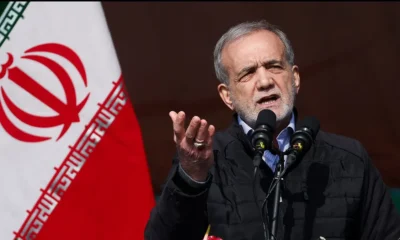
 World News4 days ago
World News4 days ago1-Iran Issues Dire Warning to Israel and Defies Trump on Nukes: “We’re Ready to Strike Deep Inside”
-

 Weather4 days ago
Weather4 days agoGilbert Weather Forecast Turns Volatile Heat Advisory and Storm Watch Issued
-
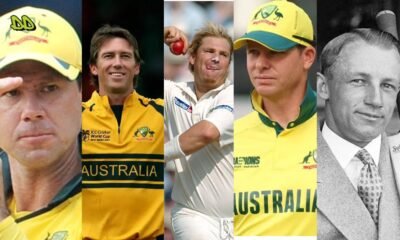
 Sports7 days ago
Sports7 days agoRicky Ponting once said “I learned from the best” but who were Australia’s 5 greatest cricketers ever?
-
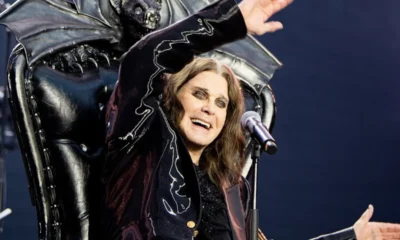
 Entertainment4 days ago
Entertainment4 days agoOzzy Osbourne dies at 76 after final concert with Black Sabbath fans say It finally caught up with him…
-

 Cricket1 week ago
Cricket1 week agoTop 5 Fastest Bowlers in Cricket History Who Delivered Blazing Thunderbolts that Shocked the World
-
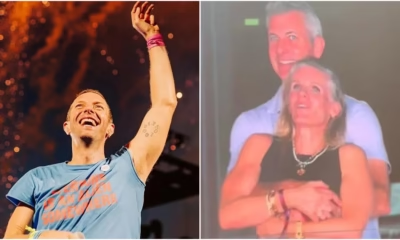
 Entertainment1 week ago
Entertainment1 week agoColdplay CEO Scandal Shocks Tech World as Viral Jumbotron Clip Forces Astronomer Chief on Leave and Sparks 7 Unbelievable Reactions
-

 Sports1 week ago
Sports1 week agoAndre Russell Drops Bombshell Hint at Retirement from International Cricket — What’s Next for the T20 Fearless Titan?
-

 Entertainment4 days ago
Entertainment4 days ago7 Powerful Lines from Jessica Simpson’s Fade Song That Reveal the Truth Behind Her Breakup























